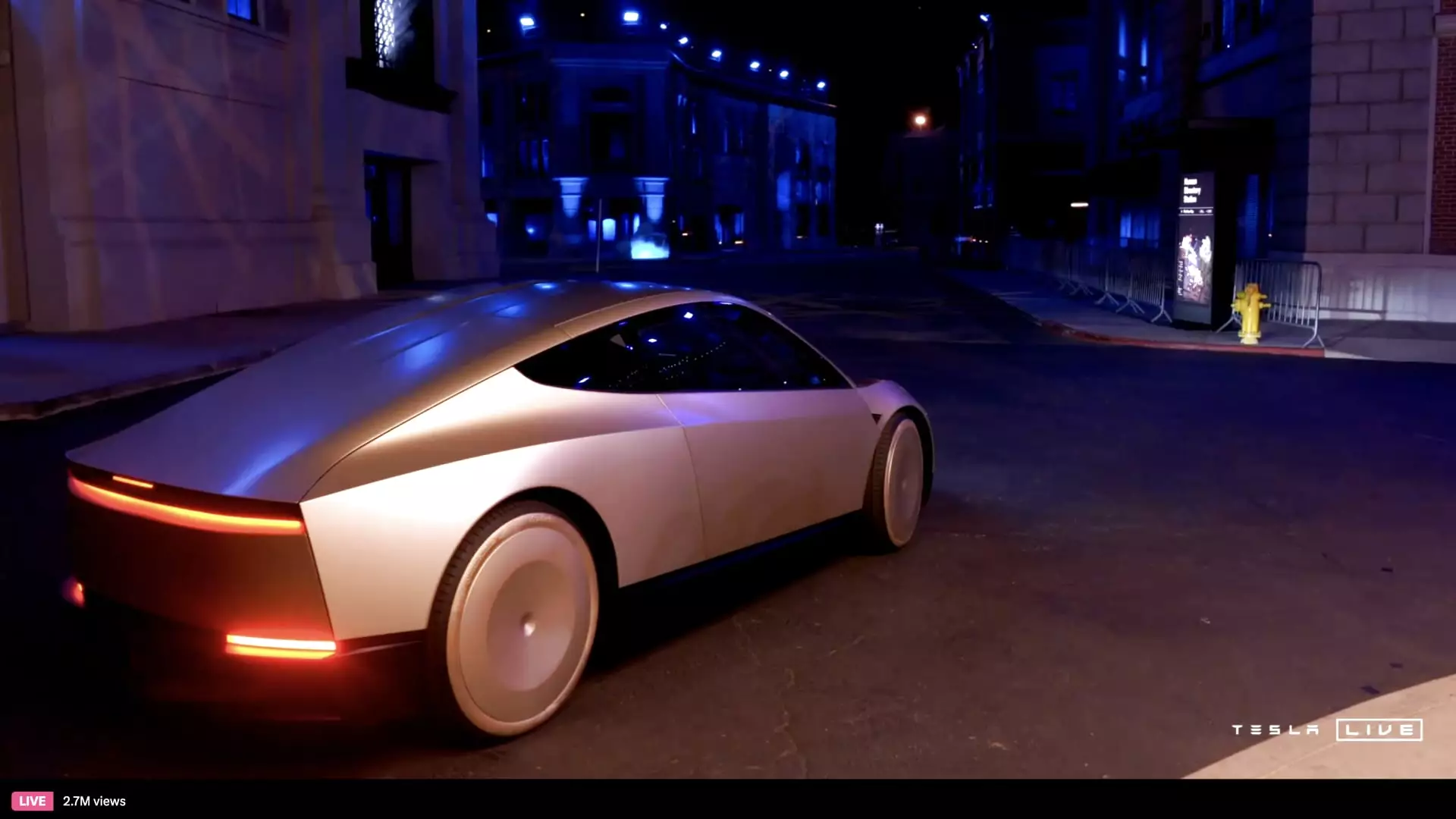The automotive industry finds itself at a crossroads plagued by ambitious visions, particularly those presented by electric vehicle pioneers like Tesla and its CEO Elon Musk. Recently, Musk introduced the Cybercab concept during a showcase event. Despite his prior proclamations about autonomous vehicles, skepticism looms heavily over the timeline and practicality of these innovations. This article explores the ambitious claim surrounding the Cybercab, the consistent struggles Tesla faces in achieving its self-driving promises, and what lies ahead for the market of autonomous transport.
Infused with fanfare, the reveal of the Cybercab—a sleek two-seater without traditional driver controls—represents more than just another vehicle; it symbolizes Musk’s ongoing endeavor to push the boundaries of vehicle autonomy. Presenting the vehicle at the Warner Bros. studio in Burbank, California, Musk touted the existence of 21 prototypes, with aspirations for affordability under $30,000. While this price point may appeal to some consumers, it raises questions about the feasibility of mass production and the extent of Tesla’s manufacturing capabilities.
Musk mentioned potential production timelines that could see Cybercabs rolling out before 2027, but as history illustrates, timelines laid down by Musk have frequently been optimistic at best. Tesla’s prior ventures into autonomous innovation bring a mixed bag of reactions; with unfulfilled promises hovering like clouds over the brand’s image, whether the Cybercab truly marks a new chapter or simply extends the unwritten tale of un achieved milestones remains to be seen.
Central to Musk’s anticipated rollout is the idea of an “unsupervised” Full Self-Driving (FSD) capability. He asserts that this feature will be functional in Texas and California for the existing Tesla Model 3 and Model Y vehicles by next year, propelled by a belief in transformative technology. Yet, the term “supervised FSD” has been a staple in Tesla’s language, revealing the nuances of current limitations. The system, as it stands, still necessitates human intervention, fundamentally defying the essence of true autonomy.
Looking back at previous promises—the anticipated “full autonomy” within three years stated in 2015, and the goal of a seamless cross-country journey without human interaction by 2017—presents a pattern notable for its inconsistencies. Much of Musk’s visionary rhetoric has led to shareholder confidence but lacks a basis in reality. Investors seeking grounded assurance face disappointment when faced with the ongoing delays.
Tesla’s ambitious future isn’t limited to the passenger Cybercab; the introduction of a Robovan expands the conversation about urban mobility infrastructure. Catering potentially to community transport needs—or even specialized cargo logistics—Musk’s Robovan hopes to address issues like population density. Such progressive notions are certainly intriguing, but the realities of execution require scrutiny. Will consumers embrace a vehicle designed predominantly for communal use, and can Tesla deliver?
Furthermore, the concept of inductive charging—allowing vehicles to charge without physical connection—signifies innovation bound to attract attention. However, prior promises coupled with the scale of infrastructure required pose significant hurdles. The notion that autonomous vehicles could recharge themselves while accommodating quick-turnaround logistics seems visionarily ahead, yet also eerily familiar in its eloquence.
Historically, Musk’s grand storytelling emphasizes an alluring future for Tesla as a pioneer of autonomy. However, this is counterbalanced by a track record of promises that have often not translated into results. The anticipated “glorious future” Musk envisions may be buoyed by optimism, but as deadlines slip and expectations recalibrate, the lingering doubts materialize.
This rhetorical flourish can also distract from the potential safety and regulatory implications of deploying fully autonomous vehicles. Regulatory bodies will undoubtedly take a cautious approach, given that the technology operates in a realm still untested at the scale Musk advocates. In navigating this tension between innovation and regulation, the stakes are considerably high—not only for Tesla’s bottom line but for public safety, as well.
The unveiling of the Cybercab and the discussions surrounding Tesla’s autonomous future reflect the broader narrative of technological innovation in transportation. While Musk’s enthusiasm resonates, the reality remains replete with challenges. As the industry pivots towards autonomous vehicles, it faces immense scrutiny against a backdrop of unmet promises. The question hinges not merely on whether Tesla can fulfill its ambitious targets, but also whether the world is ready for the transformative shift towards autonomy—a shift that remains tantalizingly, yet frustratingly, at arm’s length.


Leave a Reply